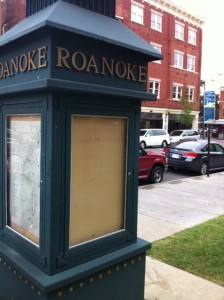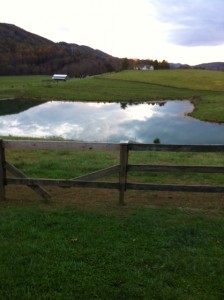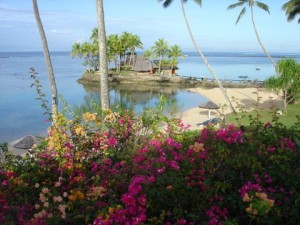Marketing
In my previous post, I talked about my trip last week to the Roanoke, Virginia, area, and what I regard are the smart marketing techniques of the Roanoke Valley Convention & Visitors Bureau by hosting travel writers and photographers from around the U.S. and Canada to experience an area they might otherwise not visit.
The trip was organized by the Florida-based public relations firm Geiger & Associates, who work out every activity down to the minute and somehow manage not to lose any writers — who rank right up there with cats in the “herding difficulty” scale — along the way.
Now I want to detail some things I learned about Roanoke and surroundings — well branded as “Virginia’s Blue Ridge” — that might be of interest to baby boomer travelers.
So in no particular order, here… Continue reading

Downtown Roanoke’s historic center is just the beginning of what the area has to offer visitors. Photo by Clark Norton
Last week I spent several days in and around Roanoke, Virginia, hosted by the Roanoke Valley Convention & Visitors Bureau. The bureau brought in 19 travel writers and photographers from around the U.S. and Canada to discover what the area had to offer and, ideally, to write about it.
This is smart marketing. Publications large and small in states and provinces as diverse as California and Massachusetts, Colorado and Connecticut, Alberta and Ontario will carry travel articles about the Roanoke region that otherwise would never appear (most of the writers had never been there before). Some of the journalists were baby boomers, others were younger or older, so they’ll chronicle the destination from a variety of perspectives.
The press trip was organized by Geiger and Associates, a Tallahassee, Florida-based… Continue reading
Tourism Fiji recently announced a new branding campaign based on the claim that the Pacific island nation is the happiest place on earth.
The new Tourism Fiji slogan is “Fiji — where happiness finds you.” Tourism Fiji CEO Rick Hamilton noted the irony that while the “whole world is continually looking for happiness, actually it’s Fijians, the people who are trying the least, who have it the most.”
The new branding is based on a 2011 survey called the WinGallup Global Barometer of Happiness. The Fijian survey was conducted for WinGallup by the Tebbutt Research Group, while different groups surveyed 57 other nations around the world.
In Fiji, almost nine out of ten people said they were happy, compared to just 53 percent of the entire global sample who said they… Continue reading
Recently I’ve written about the problems that fake and fraudulent consumer travel reviews — of hotels, restaurants, attractions and the like, called “astroturfing” — are causing readers of online sites who are trying to get honest information while planning their trips or while on the road.
The New York State attorney general is even handing out fines for such underhanded practices as company owners hiring cheap overseas labor to write positive “reviews” of places they’ve never been, or asking their employees to give competitors’ companies bad reviews, or just writing (rave) reviews of their own establishments themselves.
Since surveys have shown that consumers place a high degree of trust in online customer reviews, it’s essential that they be as accurate and unbiased as possible.
With many baby boomers thinking of relocating upon retirement (and thousands are now reaching… Continue reading
Baby boomers were among the main driving forces behind the environmental movements that blossomed in the 1970s and beyond, and many baby boomers try to stay eco-conscious when they travel.
Eco-tourism is, in fact, a big force in the travel business, partly because baby boomers have embraced it so readily.
The last thing any of these boomers wants to do is unwittingly support a business that feigns eco-consciousness but is really the opposite.
The World Society for the Protection of Animals (WSPA) has some tips for recognizing supposed eco-tourist attractions that actually hurt animals and the environment in general. They have a colorful name for this deceitful practice: greenwashing.
They single out a popular attraction in the Cayman Islands, the Cayman Turtle Farm — which claims to focus on conservation of… Continue reading

Acadia National Park — named one of the “ten best places where you can’t see fall foliage now.” Photo by Clark Norton
Among the many millions of Americans being hurt financially and otherwise by the U.S. government shutdown, now in its 11th day as of this writing, are small business owners in gateways to national parks who depend on tourist dollars to survive.
An important piece in the October 11th New York Times details some of the damage. While the piece focuses mainly on the economic costs to businesses near Utah’s Zion National Park — restaurants, lodgings, souvenir shops, bike rental places and the like — the same can be said for other gateway areas across the country.
They’re feeling the pinch — actually the squeeze — from West Yellowstone, Montana, to Gatlinburg, Tennessee (headquarters of Great Smoky Mountains National Park), and Estes Park, Colorado (Rocky Mountain National Park)… Continue reading
In previous posts on the Maine windjammers Nathaniel Bowditch (go here) and Isaac H. Evans (go here), I talked about the experiences of sailing aboard these historic vessels.

The Great Schooner Race of Maine windjammers, held each summer. Photo by Meg Maiden
Now I’d like to put the spotlight on the Maine Windjammer Association, which represents ten traditional Maine tall ships, seven of which are National Historic Landmarks. Collectively, it’s the country’s largest fleet of historic, passenger-carrying vessels.
Besides the Bowditch and the Evans, they include the American Eagle, the Angelique, the Heritage, the Lewis R. French, the Mary Day, the Stephen Taber, the Timberwind, and the Victory Chimes.
While all of the vessels are privately owned, the Association promotes and markets the windjammers as a group, producing significant savings in advertising budgets for each ship.
All… Continue reading
The entrepreneurial spirit is alive and well, as companies produce gadgets that wouldn’t exist without smartphones. Or folks traveling with smartphones. Here are two that I think baby boomer travelers will find useful.

A little boy — someone’s grandson? — watches a video using a Keyprop to hold up the phone. Photo from Keyprop.
The first new gadget is pretty ingenious: it’s called a Keyprop. You can use it to prop up your phone so you can read from it, watch videos and or even take selfies (if you download an iPhone app) without having to hold onto your phone.
In the shape of a key — it fits on your key ring so you’ll always have it — Keyprop is made of hard rubberized material and comes in a variety of colors like green, red, blue and black. It fits virtually all smartphones by inserting the prong into the… Continue reading
Need a knee replacement? The medical tourist may combine surgery with a visit to the Taj Mahal.
Yes, we were once the hip generation — and we’re still pretty hip, if you ask me — but now many of us baby boomers are in the market for hip replacements. Not to mention knee replacements, heart bypasses, various forms of cosmetic surgery, and a host of other major medical procedures.
Alas, it goes with the territory of getting a little older, a little wizened, but…still wanting to remain as active and vibrant as possible for as long as possible.
And that’s where medical tourism comes in. In yesterday’s post I talked about the growth of medical tourism — traveling to other countries to have surgeries and other medical procedures done at a small fraction of what they would cost in the United States. And, as a byproduct of that less… Continue reading
With the U.S. health care system all too much in the news right now, it’s a good time to raise the issue of medical tourism: Americans — especially baby boomers — traveling to other countries to have surgeries and other medical procedures that cost a small fraction of what they do in the U.S.
And health permitting, many of these baby boomer medical tourists are taking the opportunity to see the sights of other countries as long as they’re traveling there anyway.
The most popular countries for medical tourism include Singapore, Thailand, India, Mexico, Costa Rica, Jordan, Turkey and Brazil.
That’s a pretty good bucket list of foreign destinations right there.
Need a knee transplant? See the unforgettable Taj Mahal in India and get a two-fer.
A heart bypass? You could leave your… Continue reading















